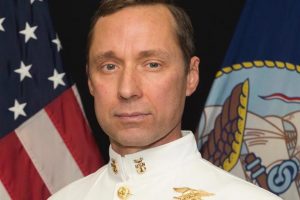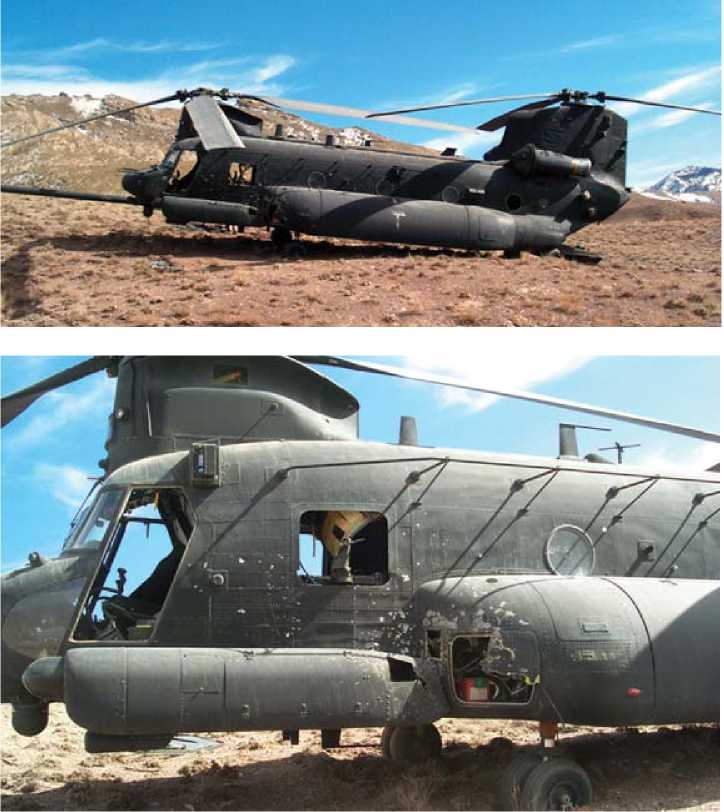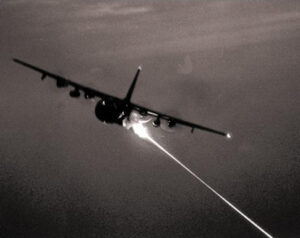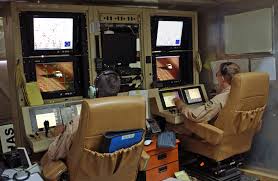
This week the White House will issue its second Medal of Honor in recent months for extreme valor in the Battle for Robert’s Ridge, recognizing one of the most intense and influential firefights of the post-9/11 era. It will be awarded posthumously to Air Force Combat Controller John Chapman.
Sometimes at night they huddled over a portable chess set in their dusty tent, their cots pulled close together and heads bent over a board game that offered respite from ceaseless hours of preparation and worry. They plotted their next moves, talked about their children and loved ones back home and, for a few stolen minutes, tuned out the near-constant roar of helicopter launches, the acrid smell of burning jet fuel and the crush of stacked combat gear – the sights and sounds of a gun outfit on the eve of a big fight.
Though they hailed from different Special Forces branches, Air Force Combat Controller John Chapman and Navy SEAL Team leader Britt Slabinski would have been indistinguishable to the casual observer at their secret Special Forces camp at Gardiz, Afghanistan in February of 2002. Both sported beards and nondescript camouflage uniforms with few markings, and carried themselves with athletic swagger, all signatures of Special Operations Forces. As they sparred good-naturedly over the chess set, the idea that these two friends would each receive the nation’s highest award for valor for their actions in the coming days would have seemed preposterous.

Britt Slabinski, Navy SEAL
Until that moment America’s self-proclaimed Global War On Terrorism (GWOT) had mostly been a rout. A relative handful of Special Forces troops, backed by overwhelming U.S. airpower and allied with local Afghan militias, had toppled the Taliban regime in a matter of weeks. They had Osama bin Laden and his top Al Qaeda lieutenants surrounded and all but captured or killed a few months earlier at Tora Bora, before allowing them to slip away. The battle then brewing would prove an inflection point, a bloody fight to the death over bitterly contested territory that would foreshadow the longest war in U.S. history. The battle would also provoke years of tension among different U.S. Special Forces branches that only John Chapman and Britt Slabinski could finally lay to rest.
In early 2002 U.S. signals and human intelligence indicated a large concentration of Al Qaeda and Taliban fighters in a steep, mountainous valley along the Afghan-Pakistan border called the Shah-i-Kot, or “Place of the King.” There were also indications that high-value Al Qaeda leaders and allied Taliban warlords were wintering in the valley, possibly in preparation for a spring offensive once the snows melted and fighting season began in earnest.
The U.S. response was the aptly named Operation Anaconda, designed to encircle the enemy and then squeeze the life out of them. As preparation, small reconnaissance teams of Navy SEALS and Army Special Forces were inserted at strategic locations in the mountains of the Shah-i-Kot. Their mission was to report on the movement of enemy forces and direct airstrikes on Al Qaeda and Taliban positions. In the early morning of March 4, it was the turn of “Mako 30,” the SEAL Team led by Britt Slabinski that included John Chapman. Their destination was the top of a prominent 11,000-foot mountain called Takur Gar. The plan was for the helicopter to set down a safe distance from the peak so the commandoes could climb stealthily to the top of the mountain, making a “controlled approach” and using the darkness as cover.
Yet no battle plan ever completely survives the firing of the first shot. Maintenance problems with one of the helicopters and a nearby B-52 bombing strike delayed the insertion of the commandos, collapsing already tight timelines. In order to position and conceal themselves before daybreak, Mako 30 would have to insert directly onto the mountaintop. Aerial surveillance indicated that the area was clear, but they all knew the risk factor of the mission had climbed significantly. The knife-like ridge at the peak of Takur Gar was a nearly perfect spot to observe the Anaconda battlespace. Someone else might have also recognized its strategic importance.
It was nearly 3 a.m. when their “Razor 3” Chinook helicopter began to touch down over the snow-covered landing zone. The team began untethering themselves from safe lines as a mix of frigid air and engine backwash poured through the open rear door. Then they lurched as a deafening explosion suddenly rocked the aircraft. The inside filled with smoke. Razor 3 had taken a direct hit from a rocket propelled grenade (RPG). The staccato thud of machine gun rounds raked the fuselage like hammer blows. The aircraft swung crazily as the pilots sought to regain control, and fluid spewed from severed hydraulic and fuel lines. Petty Officer 1st Class Neil Roberts slipped and tumbled out the back ramp, falling into a “hot” landing zone crawling with enemy fighters.
Roughly five miles away the pilots from the 160th Special Operations Aviation Regiment brought the crippled helicopter down in a controlled crash landing on a relatively flat patch of hillside. A headcount was taken to confirm what they all knew – Neil Roberts was missing. Tech Sergeant John Chapman was on his radio directing an AC-130 gunship to provide air cover of the crash site, and he arranged for another helicopter to collect Mako 30. They were soon airborne once again heading back to the base camp at Gardiz.

Razor 3 MH-47 Chinook
John Chapman and the SEALS sat inside the darkened MH-47 Chinook, propellers whirling overhead. Slabinski was on the bank ramp of the helicopter going over his notes and pondering a fateful decision. So far that night Mako 30 had been ambushed by Al Qaeda fighters, lost a man on a rocky in the Hindu Kush, and survived a controlled helicopter crash in enemy territory. And it was still more than an hour before dawn.
Surveillance from an AC-130 gunship flying over Takur Gar indicated that their teammate Neil Roberts was still alive and surrounded by nearby enemy fighters. Everyone understood Robert’s fate if he was captured. The members of Mako 30 had also learned the hard way that the Al Qaeda force entrenched atop Takur Gar had them badly outnumbered and outgunned. To reach Roberts they would almost certainly have to fight uphill through deep snow. They could wait until the Quick Reaction Force of Army Rangers arrived to help even the odds, but it was doubtful Roberts had that much time.
Slabinski strode into the helicopter and told the crew chief to turn the lights on inside the aircraft. John Chapman and his four SEAL teammates lined up.
“Eyes on me!” Slabinski shouted. “Eyes on me!”
There was no time for debate. Once Slabinski had their attention he laid out the tactical situation, and told them of his decision to return to Takur Gar to try and rescue Neil Roberts. As Slabinski looked straight into the face of John Chapman and each of the other SEAL commandoes, they all nodded their heads in the affirmative. Not one member of the team hesitated or flinched from their duty.
“Okay, let’s go do this,” one of the SEALS said, summarizing the reactions of the team.
Razor 4 settled over the hot landing zone in the darkness and immediately machine gun fire slammed into the fuselage once again. Slabinski was the first off the back ramp, and he jumped down into fresh snow and quickly tumbled face-first into a drift. John Chapman was the next man out of the helicopter.
As the Al Qaeda machine gunners focused their fire on the departing helicopter, Chapman charged directly uphill towards a fortified bunker under a tree, firing his M-4 automatic rifle as he went. Slabinski was a short ways behind. Without hesitation Chapman darted into the bunker, and shot two Al Qaeda fighters at point blank range.
“John, what do you got?” Slabinski shouted when he had nearly reached Chapman.
“I don’t know!” Chapman replied, his head on a swivel.
A tongue of flame licked out of the dark maw of a bunker hidden beneath a tree just 10 yards away. The force of the impact knocked John Chapman to the ground. Slabinski felt the bullets passing through his clothing and gear, smashing his medical kit and rattling his body armor. Taking cover behind a large boulder, he peered around and saw John Chapman’s motionless body.
“John killed some guys underneath the first tree, and gave the rest of us time to get up to the rock,” one of the unidentified SEAL Team members would later tell investigators. “Chapman started to engage the guys in the tree, or in the bunker…if John hadn’t engaged the first enemy position, it would have surely killed us all before we reached cover. John died saving us from the enemy fire.”
Twice Slabinski tried unsuccessfully to destroy the second machine gun bunker with grenades. Out of hand grenades, Slabinski fired his 40-mm grenade launcher at enemy muzzle flashes to suppress the fire pinning down his teammates. Another attempt to flank the nearest machine gun bunker resulted in the SEAL Team’s M-60 machine gunner “Brett” being wounded by multiple grenade fragments. John Chapman’s body still lay motionless nearby where he was cut down by the machine gun. There was no sign of Neil Roberts. And they were still caught in the crossfire of multiple bunkers.

AC-130J gunship
Slabinski decided to relocate the team to the rear over a small lip and depression in the mountainside that might offer better cover. With an AC-130 gunship providing cover, Slabinski shouted for his guys to start moving. Before leaving the cover of the rock, Slabinski crawled right on top of John Chapman’s body, looking for some movement or any sign of life. He got nothing. John was gone.
As the remaining team stumbled through the snow towards the indentation some 20 yards down the mountain the Al Qaeda machine gun erupted again. Impact geysers tracked them until one of the SEALS was cut down with a direct hit that nearly took off his leg. Slabsinki and another SEAL grabbed their wounded teammate by his body armor and dragged him over the lip, his blood staining the snow and leaving a trail of gore.
SEAL Team leader Britt Slabinski decision to return to Takur Gar to rescue Neil Roberts heroically embodied the U.S. military’s ethos of “leave no man behind,” and he valiantly led his battered men off the mountain. And yet, improbably and contrary to everything Slabinski believed he knew, his team’s fight did not end there. Compelling evidence from an improbable witness would later suggest that a member of Mako 30 still fought on at the top of Takur Gar.

Predator ground control station
High above the frigid mountain peak a wasp-like drone circled unseen, as first recounted in former Breaking Defense contributor Rick Whittle’s book, Predator: The Secret Origins of the Drone Revolution. There were only a handful of MQ-1 Predators in the U.S. arsenal at the time, and they represented the leading edge of a revolution in air reconnaissance and surveillance. The imagery broadcast by the Predator circling Takur Gar on March 4, 2002, and the narrative it supported, would ultimately lead to the first U.S. Airman receiving the Medal of Honor since the Vietnam War.
John Chapman’s body lay as still as death for 12 minutes. No one had approached the bunker where he lay, and yet the Predator video suddenly captured movement there. Around that time another Air Force Combat Controller attached to a nearby Delta Force reconnaissance team began to hear faint distress calls on his satellite radio, repeated over and over. “This is Mako Three Zero Charlie…This is Mako Three Zero Charlie…This is Mako Three Zero Charlie.” In a sworn affidavit to investigators, the Combat Controller confirmed that he immediately recognized both the radio call sign and the voice. It was definitely John Chapman.
“I distinctly heard MAKO 30 transmitting,” the Combat Controller, who had served in the same unit as Chapman for years, told investigators. “This occurred over a 40-minute period. I am absolutely positive that [it] was John’s voice. I have no doubt whatsoever.”
In the Predator’s grainy, black-and-white video the figure presumed to be Chapman moves about the bunker firing at multiple targets. A low-light video camera in the AC-130 gunship circling overhead also picked up the signature “glint tape” and body “strobe” designed to identify a U.S. commando on the ground, and it registered the laser rangefinder of a U.S.- issued M-4 rifle firing from the bunker. Air Force targeting analysis would count 39 distinct muzzle flashes from Chapman’s M-4 automatic during this time. The Delta Force reconnaissance team also intercepted radio traffic from the Al Qaeda fighters talking about an “American” still on the mountaintop, and how to eliminate him. Twice Al Qaeda fighters appeared to sneak up on the bunker, before being killed at point blank range.
By the time Razor 1 carrying the Quick Reaction Force appeared, Chapman was wounded multiple times and nearly out of ammunition. Seemingly with no thought for his own life, Chapman left the safety of his bunker to engage two Al Qaeda fighters armed with Rocket Propelled Grenades on the ridgeline, exposing himself to the machine gunner only yards away. The Chinook was hit by an RPG but able to put down in a controlled crash. Chapman was cut down with two fatal rounds in his back.
An autopsy would later reveal that John Chapman was shot nine times, seven of the wounds definitely suffered while he was still alive. He also had a broken nose and abrasions that suggested hand-to-hand combat. On recovery his body was surrounded by empty, 30-round magazines, and he had all but exhausted his 210 rounds of ammunition.
“John Chapman decided in his own mind that to safeguard his teammates’ lives, he couldn’t do that and protect his own life,” said Lt. Col. Kenneth Rodriguez, his commander in the Air Force’s 24th Special Tactics Squadron, “John sacrificed himself for others.”
After an exhaustive, 30-month review of all the evidence, Defense Secretary Jim Mattis concluded that John Chapman was deserving of the nation’s highest award for valor. President Trump will present the Medal of Honor to Chapman’s family in an event today at the White House.

Jim Mattis, Defense Secretary
On first learning the news, Chapman’s wife Valerie Nessel said that if John were still alive, he would want to recognize the other men who lost their lives that day. “Even though he did something he will be awarded the Medal of Honor for, he would not want those other guys to be forgotten. They were part of a team together. And I think he would say that the Medal of Honor is not just for him, but for all the guys who were lost on that mountain.”
For the record, seven elite U.S. Special Forces troops were killed in action during the intense, 15-hour firefight. The fallen include the battle’s namesake and Navy SEAL Neil Roberts, who was executed soon after being captured by Al Qaeda fighters; Army Rangers in the Quick Reaction Force, Sergeant Bradley Crose, Corporal Matthew Commons, and Specialist Marc Anderson; Sergeant Phillip Svitak of the Army’s 160th Special Operations Aviation Regiment; Air Force Pararescueman Jason Cunningham; and Air Force Combat Controller John Chapman.
Their sacrifice spoke to the difficult years ahead as the U.S. military confronted a determined global terrorist insurgency. The lessons learned during the fighting on Robert’s Ridge also informs U.S. military tactics, training and planning to this day. Above all, the heroism of U.S. forces that day sent an unmistakable message to the Al Qaeda terrorists that there was no place they could hide, not even on a remote mountain peak in the Hindu Kush.
The tragedy and confusion of what exactly happened on Robert’s Ridge, and who was most deserving of recognition for their actions there, sparked tension and controversy for years among the service branches within the Special Forces community. The Navy SEALs were understandably reluctant to accept that Chapman may have been left alone on the mountaintop. Many members of the Air Force Special Forces community believe that in the deadly chaos, it may actually have been Neil Robert’s dead body that Slabinski crawled over in the dark
After more than 16 years those tensions have finally been laid to rest in recent months. On May 24, retired Navy SEAL Team leader Britt Slabinski likewise received the Medal of Honor. With today’s Medal of Honor ceremony for John Chapman, the former tent mates and friends are now united in the world’s most exclusive ring of valor.
In an exclusive interview with the author, Britt Slabinski was asked for his reaction to evidence suggesting Chapman survived his initial wounds that terrible morning. Slabinski paused before answering:
“Not a day goes by when I don’t think about John. There was no doubt in my mind that he was dead. No doubt in my mind. But my first thought [on hearing of that possibility] was that it would be completely in John’s character to have done that. That was his DNA. That was my whole team’s DNA. It’s not what I saw. Not what I experienced. But it was within John Chapman’s character to have done those things.”
Navy jet trainer fleet operations remain paused after engine mishap
One week after the incident, a Navy spokesperson says the service is continuing to assess the fleet’s ability to safely resume flight.


























